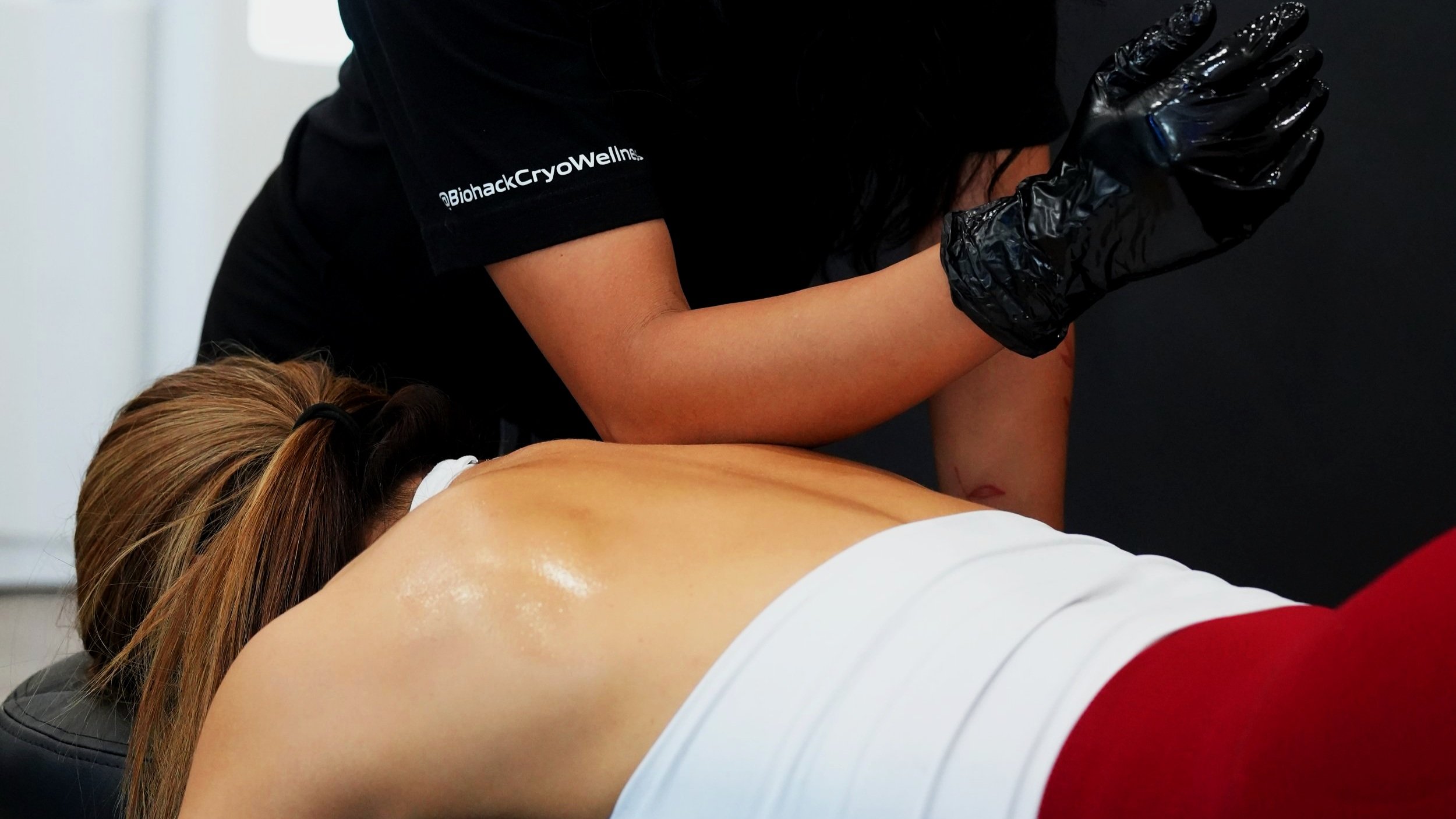
MYOFASCIAL RELEASE
RESTORE BALANCE AND RELEASE MUSCLE TENSION
Myofascial Release Therapy is a hands-on technique designed to relieve tension in the fascia (the connective tissue surrounding muscles). By targeting areas of restriction and tightness, this therapy aims to restore flexibility, alleviate pain, and promote overall body movement. Ideal for those suffering from chronic pain or muscle stiffness, Myofascial Release offers deep, lasting relief that goes beyond traditional massage techniques.
Myofascial Release is a therapeutic technique that focuses on the fascia, a dense web of connective tissue that surrounds and supports muscles, bones, and organs throughout the body. Over time, the fascia can become restricted due to injury, stress, or inflammation, leading to pain, decreased mobility, and discomfort. During a Myofascial Release session, a trained therapist applies sustained pressure and stretching techniques to specific points of tension in the fascia, helping to release these restrictions and restore normal movement patterns.
Unlike traditional massage, Myofascial Release targets the deeper layers of fascia and muscle tissue, offering a more profound release of tension. It can be particularly effective for individuals with chronic pain conditions such as fibromyalgia, plantar fasciitis, and tension headaches, or for athletes seeking to improve mobility and prevent injury.BENEFITS
-
PAIN RELIEF
Myofascial Release targets the source of pain within the fascia, reducing discomfort caused by chronic conditions like back pain, fibromyalgia, and tension headaches.
-
Improved Mobility & Flexibility
By breaking up adhesions and tightness in the fascia, this therapy restores the natural movement of muscles and joints, increasing overall flexibility and range of motion.
-
Enhanced Circulation
The technique helps improve blood flow to areas of tension, promoting healing, reducing inflammation, and encouraging oxygen and nutrient delivery to the muscles.
-
Release of Muscle Tension
Myofascial Release provides deep, lasting relaxation by targeting the fascia’s tight points, which helps relieve muscle stiffness and reduces tension in specific areas of the body.
-
Reduced Scar Tissue
This therapy can break down scar tissue formed from injuries, surgeries, or repetitive movements, promoting more efficient muscle function and reducing pain caused by adhesions.
-
Stress Reduction & Relaxation
The deep tissue manipulation of Myofascial Release has a calming effect on the nervous system, helping to alleviate stress and promote relaxation in both the body and mind.
-
Improved Posture
By releasing tension and imbalances in the fascia, Myofascial Release helps realign the body, supporting better posture and reducing strain on the spine and joints.
-
Prevention of Injury
Regular Myofascial Release can prevent muscle imbalances and fascial restrictions from forming, making it an excellent treatment for athletes or anyone looking to prevent injury and maintain long-term mobility.
Frequently asked questions
-
While both myofascial release and massage address muscle tension, myofascial release specifically targets the fascia and focuses on releasing restrictions in connective tissue. It’s typically slower, more focused, and may involve deeper pressure than traditional massage.
-
For your myofascial release session, we recommend wearing minimal, comfortable clothing to allow easy access to the areas being treated. For women, we suggest wearing a sports bra and either tights or compression shorts. For men, loose-fitting shorts are ideal.
If you prefer more coverage, we can provide a robe for your comfort. Please avoid wearing anything restrictive, as the session requires freedom of movement to effectively address fascia restrictions.
-
Myofascial release can help with a variety of conditions, including chronic pain, fibromyalgia, headaches, back pain, neck pain, TMJ (jaw pain), sciatica, muscle stiffness, and sports injuries
-
The technique can sometimes cause discomfort, especially when releasing tight spots, but it should not be unbearably painful. Many people find the sensation to be deep and therapeutic rather than painful. Always communicate with your therapist if something feels too intense.
-
After a session, it’s recommended to drink plenty of water to help flush out toxins that may have been released, and to rest or gently stretch to allow the body to integrate the work. Avoid intense physical activity immediately after treatment.
-
Myofascial release is generally safe for most people, but it may not be recommended for individuals with certain medical conditions, such as acute inflammation, fractures, or certain skin conditions. Always consult with your healthcare provider before starting treatment, especially if you have any underlying health concerns.
-
The number of sessions depends on the condition being treated, the severity of the restrictions, and how your body responds. Some people experience relief after just one session, while others may need multiple sessions over weeks or months.
